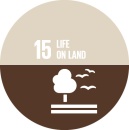DNA sequencing of indigenous African cattle reveals vital clues to increasing productivity
- From
-
Published on
19.07.18
- Impact Area
 Since their introduction to Africa thousands of years ago from the Middle East and the Indian subcontinent, cattle breeds have gradually adapted to cope with hugely varying environments, from the Sahelian desert to the subhumid tropical forests. These cattle are important sources of meat, milk, traction and manure across the continent. With rapid population growth and a rising urban middle class, they will become even more significant as demand for meat and milk is expected to more than double in sub-Saharan Africa from 2000 to 2030.
Since their introduction to Africa thousands of years ago from the Middle East and the Indian subcontinent, cattle breeds have gradually adapted to cope with hugely varying environments, from the Sahelian desert to the subhumid tropical forests. These cattle are important sources of meat, milk, traction and manure across the continent. With rapid population growth and a rising urban middle class, they will become even more significant as demand for meat and milk is expected to more than double in sub-Saharan Africa from 2000 to 2030.
Identifying the genetic basis underlying heat tolerance and resistance to killer diseases—major production constraints—offers huge opportunities to increase meat and milk productivity to meet rising demand. It opens the way to the scaling up of breeding programs for these specific key traits, potentially enhancing the incomes of hundreds of millions of smallholders worldwide.
Related news
-

Leave no crops behind: the case for cryopreservation
CGIAR Initiative on Genebanks05.12.24-
Biodiversity
This year’s World Food Prize was awarded to two pioneers of crop diversity conservation: Geoff…
Read more -
-

Multistakeholder networks promoting cocoa farming and silvopastoral livestock in Caquetá, Colombia
CGIAR Initiative on Low-Emission Food Systems28.11.24-
Biodiversity
-
Climate adaptation & mitigation
-
Mitigation
-
Social inclusion
-
Youth
By Victoria Guáqueta Solórzano and Roger Ayazo Berrocal, Pontificia Universidad Javeriana, and M…
Read more -
-

Participatory Innovation Labs: towards sustainable agri-food systems
CGIAR Initiative on Low-Emission Food Systems20.11.24-
Biodiversity
-
Climate adaptation & mitigation
-
Environmental health & biodiversity
-
Food security
-
Gender equality
-
Gender equality, youth & social inclusion
-
Mitigation
-
Social inclusion
-
Youth
By: Neidy Clavijo, Luz A. Rodríguez, Alexandra Mañunga, Angie Bernal, Ana María Mesa (Pontificia …
Read more -

